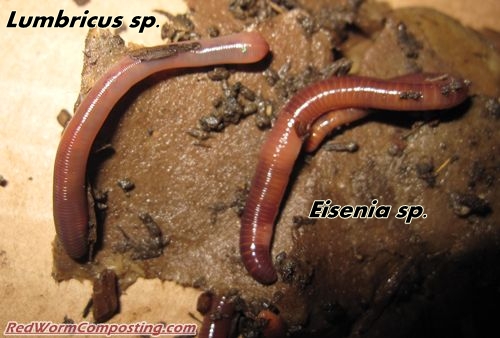Crucial Guide to Red Wiggler Composting: Tips for a Growing Worm Farm
Crucial Guide to Red Wiggler Composting: Tips for a Growing Worm Farm
Blog Article
Understanding the Benefits of Red Wiggler Composting: Exactly How This Efficient Approach Transforms Organic Waste Into Nutrient-Rich Soil Amendments
Red Wiggler composting, employing the varieties Eisenia fetida, offers a compelling technique to organic waste monitoring, transforming cooking area scraps and yard debris into useful soil changes. This method not only improves soil fertility yet additionally addresses pushing environmental worries, consisting of land fill waste reduction and greenhouse gas discharges.
What Are Red Wigglers?
Red wigglers, clinically known as Eisenia fetida, are a species of earthworm that play a pivotal function in vermicomposting systems. These worms are defined by their reddish-brown shade, fractional bodies, and a distinct ability to grow in organic-rich atmospheres, making them perfect for composting applications - Red Wiggler Composting. Unlike their garden-dwelling counterparts, red wigglers prefer to occupy the top layers of dirt, where decomposing matter is abundant
Normally determining in between 3 to 4 inches in length, red wigglers have a high reproductive price, allowing them to increase quickly under ideal problems. They have a distinct digestive system that allows them to refine natural waste successfully, converting it into nutrient-rich castings, which are highly valuable for plant growth.
Their tolerance to varying moisture degrees and temperature varies better enhances their energy in vermicomposting arrangements, making them a favored option among composting enthusiasts. Additionally, red wigglers are aerobic microorganisms, which requires a well-aerated composting environment, ensuring reliable decomposition. Recognizing the organic characteristics and habits of red wigglers is crucial for optimizing their use in lasting waste management techniques.

Advantages of Vermicomposting
Harnessing the power of vermicomposting offers a wide range of farming and ecological benefits. To start with, it significantly decreases organic waste in land fills, thus reducing methane discharges, a potent greenhouse gas. By diverting food scraps and yard waste to vermicomposting, we support a more sustainable waste management system.
Additionally, vermicomposting boosts dirt health. The castings generated by red wigglers are rich in essential nutrients, germs, and enzymes, boosting soil framework and fertility. This nutrient-rich amendment promotes robust plant growth and enhances water retention, lowering the need for chemical fertilizers.
Furthermore, vermicomposting fosters biodiversity in the soil community. The introduction of useful microorganisms from worm castings help in disease suppression and nutrient biking, developing a much healthier setting for plants.
Economically, vermicomposting lowers the costs connected with chemical inputs and waste disposal. Farmers and garden enthusiasts can grow high-grade produce at reduced costs, contributing to food protection and sustainability.
Exactly How to Start Composting
Beginning a composting endeavor can be a satisfying and uncomplicated procedure. To start, select a suitable location that is well-drained and receives partial sunlight. This will certainly help keep a well balanced temperature level, important for the composting procedure. Next off, select a compost bin or create a marked area in your yard, guaranteeing it is easily obtainable for adding materials and gathering garden compost.
Gather organic products such as kitchen scraps, yard waste, and shredded paper. Aim for a well balanced mix of 'eco-friendly' products, high in nitrogen (e.g., fruit scraps, coffee premises), and 'brownish' materials, abundant in carbon (e.g., dried out leaves, cardboard) A proportion of approximately 2:1 environment-friendly to brown products is ideal.
Beginning layering your materials, making certain adequate air flow by transforming the pile frequently. This advertises aerobic decomposition, reducing odors and speeding up up the process. Display wetness levels; the compost ought to really feel like a damp sponge yet not extremely wet.
Nutrient Profile of Vermicompost
Composting, particularly with red wigglers, produces a nutrient-rich product understood as vermicompost. Additionally, it gives trace elements like calcium, iron, and magnesium, promoting robust plant growth and improving dirt health.
The microbial activity present in vermicompost better enriches its profile, presenting useful bacteria and fungis that advertise vitamins and mineral schedule and uptake in plants. This organic element aids in reducing plant illness and improving soil structure, causing improved water retention and aeration.

Ecological Effect of Composting
The environmental impact of composting, especially via the use of red wigglers, is complex and profound. This approach significantly decreases the quantity of organic waste sent out to garbage dumps, which in turn lessens greenhouse gas exhausts, particularly methane-- a potent contributor to environment modification. By drawing away organic products from land fills, red wiggler composting not only aids minimize ecological deterioration yet likewise promotes sustainable waste management methods.

Moreover, composting adds to carbon sequestration, as the process captures carbon dioxide from the ambience and stores it in the dirt. This all-natural procedure help in combating climate change while enhancing informative post the soil - Red Wiggler Composting. Generally, red wiggler composting offers a sensible, green service for waste management and environmental sustainability, advertising healthier environments and a much more sustainable future
Final Thought
In verdict, Red Wiggler composting serves as an effective approach for transforming natural waste right into beneficial dirt amendments. The process not just enhances soil fertility and framework yet likewise mitigates environmental concerns connected with waste disposal.
Red Wiggler composting, utilizing the species Eisenia fetida, presents a compelling method to natural waste administration, transforming kitchen scraps and yard particles into useful soil modifications. Unlike their garden-dwelling equivalents, red wigglers prefer to occupy the top layers of dirt, where decomposing matter is bountiful.
The castings produced by red wigglers are abundant in important nutrients, germs, and enzymes, boosting soil structure and fertility. The nutrient-rich byproducts of red great post to read wiggler activity boost soil structure, rise water retention, and advertise biodiversity within the dirt ecosystem.In verdict, Red Wiggler composting serves as an efficient method for converting organic waste right into important dirt amendments.
Report this page